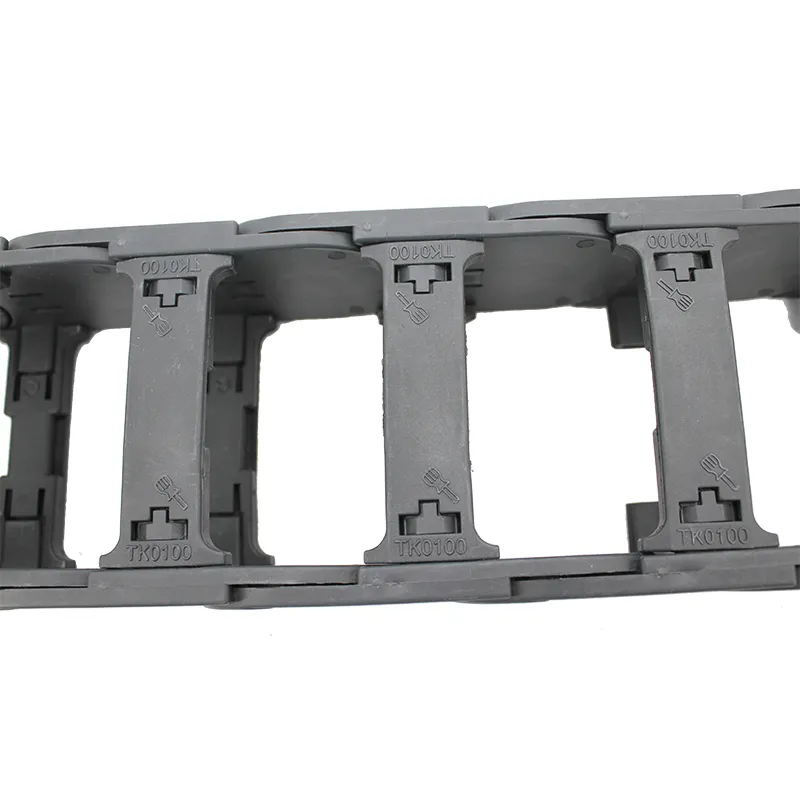cable carrier system
Understanding Cable Carrier Systems A Comprehensive Overview
In today's technologically advanced world, the efficient management of cables and wires has become a paramount concern across various industries. The complexity of modern machinery and the proliferation of electric systems have necessitated innovative solutions to organize and protect cabling infrastructures. One such solution is the cable carrier system, also known as a cable track or drag chain, which has become an essential component in many applications.
What is a Cable Carrier System?
A cable carrier system is designed to support and guide flexible cables, hoses, and wires in dynamic applications, ensuring their protection and smooth movement. Commonly found in automation, manufacturing, and robotics, these systems provide a systematic method for routing cables and minimizing wear during motion. Typical cable carriers consist of a series of interconnected links that form a rigid chain-like structure, allowing for a customizable length suited to specific requirements.
Working Principles
Cable carrier systems operate on a simple yet effective principle of organized movement. As machinery or equipment moves, the carrier system allows cables to freely extend and retract without tangling or stressing. This not only protects the cables from physical damage but also reduces wear and tear that can lead to costly downtime and repairs.
The design of the carrier is crucial, with factors including bending radius, load capacity, and speed being critical considerations. Most cable carriers are designed to accommodate various types of cables, including power, data, and pneumatic; hence, manufacturers often offer customizable options to meet specific industrial needs.
Types of Cable Carrier Systems
There are several types of cable carrier systems available, each tailored for specific applications
1. Open Type Cable Carriers These feature a design that allows easy access to cables for maintenance or replacement. They are often used in environments where visibility and accessibility are priorities.
2. Closed Type Cable Carriers Unlike open carriers, closed systems provide enhanced protection against dust, debris, and other contaminants. They are ideal for harsh or outdoor environments.
3. Heavy-Duty Cable Carriers As the name suggests, these carriers are built to handle substantial loads, making them suitable for heavy machinery and industrial applications.
cable carrier system

4. Flexible Cable Carriers Designed for applications that require a high degree of movement, these carriers can adapt to varying angles and still maintain cable integrity.
Benefits of Using Cable Carrier Systems
The implementation of cable carrier systems comes with numerous benefits
- Improved Durability By protecting cables from excessive bending and wear, cable carriers significantly extend the lifespan of wiring systems.
- Enhanced Safety A well-organized cable system reduces the risk of trips and falls in work environments, creating a safer workplace.
- Increased Efficiency With reduced downtime for maintenance and repairs, companies can operate more efficiently, impacting overall productivity positively.
- Customizability The versatility of cable carrier systems allows for tailored solutions that can meet the specific demands of various applications and environments.
Applications Across Industries
Cable carrier systems are used extensively across multiple sectors. In the manufacturing industry, they support automation machines that rely heavily on precise motion control. In the aerospace sector, cable carriers help manage wiring in aircraft, ensuring reliability in critical systems. Robotics heavily utilize these systems to facilitate smooth and effective movement of wires in robotic arms. Additionally, entertainment venues and stages frequently implement cable carriers to manage lighting and sound equipment, allowing for seamless transitions and quick setup changes.
Conclusion
In summary, cable carrier systems play a crucial role in modern industrial applications by ensuring the effective management and protection of cables, hoses, and wires. As industries continue to evolve and embrace automation and advanced machinery, the importance of reliable cable handling solutions becomes even more paramount. Investing in an appropriate cable carrier system not only enhances operational efficiency but also promotes safety and durability in dynamic work environments.








